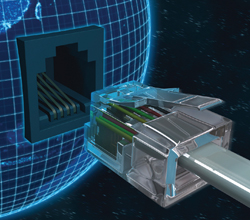
The other AVnu founders are Harman, Cisco, Intel, Samsung and Xilinx, while “Promoter” members include Analog Devices, Applied Micro, Audinate, Avid, Barco, Lab X Technologies, Marvell, Meyer Sound, Pelagicore, Sennheiser and Shure.
As you can determine from those names, AVB and the AVnu Alliance encompass consumer electronics, automotive and pro AV markets.
By definition, proprietary technologies are owned by the inventors, who need to create a revenue stream, typically by selling both licenses to use the technology and chipsets that implement it. That creates a vicious cycle: the up-front licensing fees discourage manufacturers from adopting the technology, limiting its usefulness and value.
That in turn limits the demand for products using the technology, which keeps per-unit manufacturing costs high. That, of course, keeps the cost of the products and/or network option high, which further limits demand, raising costs, and so on.
This doesn’t mean that no one is making a living off of digital audio networking. But it does mean that none of these technologies has expanded overall demand for pro AV products and services the way MIDI did in the 1980s and computer-based recording and production did in the 1990s.
Keep in mind that AVB is non-proprietary – no licensing fees. Once consumer electronics and automotive markets come on line, AVB network interfaces will become as cheap as sand, or at least highly refined melted sand (silicon) that embodies a large dollop of intellectual property.
There’s no doubt that, unlike its proprietary predecessors, AVB will change the game. The big questions now are when and how.
Christian Doering, M.B.A., CSI, CDT, provides marketing services to pro AV and lighting companies through his company Me, Ink.
